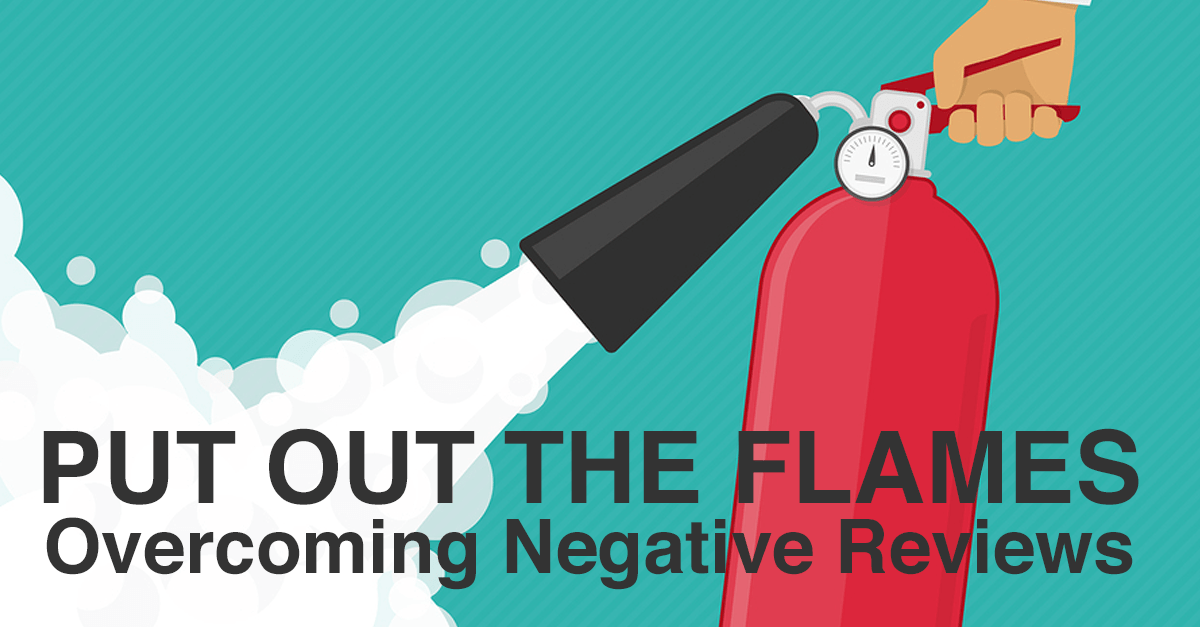Someone recently asked us what to do when your reputation (AKA social proof) takes a hit. Since we’ve had it come up a few times, we wanted to share some ideas & tactics for overcoming negative reviews in public forums. Call this Reputation Management 101, a simple set of ideas on how you can handle bad reviews more effectively (yes, your ego may be bruised, but you must march forward…). You must put out the flames early so you don’t have a “towering inferno” scale problem…
Online Review Sites
The four most common places we see negative reviews are Yelp, Facebook, Google and Ripoff Reports.
Yelp
Yelp is obviously one of the most popular destination sites for user reviews. If you’re looking for recommendations of top restaurants, stores, nightlife, entertainment or other services, Yelp’s a heavy hitter, and if you’re listed, you want to keep an eye on your Yelp reviews.
Ripoff Report
Ripoff Report is a for-profit website that started in 1998. Like a new-wave Better Business Bureau, Ripoff Report provides a forum for customers who want to vent their frustrations. Many times, these reports rank high in search engines, and unlike BBB, all complaints remain public and unedited. That is, these reviews are ‘sticky’. As such, you may want to set up a Google Alert for your company name.
If your business has a Facebook page, you’ll also be able to get similar reviews to Yelp. They’re not as search-engine friendly, but nearly everyone alive or dead is on Facebook, so the opportunity to see your Facebook review is high. Especially for small and local businesses, Facebook can be your best friend or your worst enemy with respect to reviews.
Google Places
Another promotional angle for small and local businesses, at least with a physical presence, is Google Places. Anyone can get free business listing on Google My Business to start building visibility in Google Maps and Google Search – you simply fill out a form, wait for a snail-mail postcard to come, and complete the authentication from the card. The good news is that your business can be easily found, with a prominent display in the right margin. The danger is that bad reviews can appear in that prominent display.
BONUS: Your Website
If you have a blog or online store, you may be able to enable online reviews of your articles or products. Since social proof is one of the most influential factors with site visitors, it’s a good idea to feature reviews and comments. Once enabled, you need to watch them, respond to them and nurture your customers for their feedback.
Tactics for Overcoming Negative Reviews
1. Prepare a thoughtful response plan.
First you need to have a plan for monitoring and responding to customer feedback. Study from the masters – look at how the best bloggers and companies work when overcoming negative reviews.
2. Respond directly.
If the feedback platform provides a means of responding directly to the customer (e.g., Yelp reviews), then try to engage the customer that way. Respond nicely, not defensively. Do your best to show compassion, even if the feedback is inaccurate or unfounded. If it seems feasible, ask for a way to make things right. Ultimately, if you can persuade the customer that you’re doing your best, you want to make amends and you care, they may remove the comment or (at the very least) stop disparaging you in the future.
3. Don’t feed the trolls.
Sometimes feedback is designed to bait you into a public discussion, and with trolls, you may end up looking silly. Keep an eye out for trolls – when you get a negative comment, look for other feedback that person has provided. For example, on Yelp, some reviewers thrive on stirring it up with small business owners (every review is 1 star with a bunch of vitriol laced into the comments). Do not feed these trolls.
4. Use the law of averages – get more positive reviews.
Build up other social proof. Can you ask other customers for good reviews? If so, do so. A single one-star review has an amazing impact, but so do ten five-star reviews. Put the math to work for you by getting more good reviews (hint: provide great service and encourage reviews). Enlist help from others!
5. Learn from your mistake.
Could you improve your product or service to avoid the problem in the first place? Perhaps your customer experience is due for some tweaking. Service design is part art and part science. Apply what you find out from customers to make things better.
6. Monitor.
Reputation management is an ongoing process. As mentioned earlier, it’s generally a good idea to create a Google Alert for your company name. Monitor stories that arise featuring you, then follow your response plan when necessary.
Reputation Management: Overcoming Negative Reviews
When your reputation gets attacked, for good reasons or not, you must take action. Reputation management is something every small business must consider – with smaller numbers of customers, any negative social proof counts more. Hopefully these ideas illustrate what you can do to take in overcoming negative reviews. Remember, it’s not personal; it’s business. Your response should be planned, swift, positive and complete. If you do, your reputation will continue climbing and your customers can see how you work to address challenges. They’ll appreciate it!
HELPFUL LINKS





![Video Engagement [Infographic]](https://twistedpuppy.com/wp-content/uploads/2017/08/twisted-puppy-blog-video-engagement-1-500x383.png)


Leave A Comment